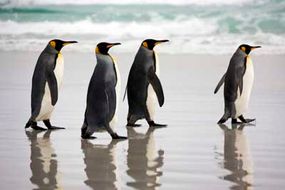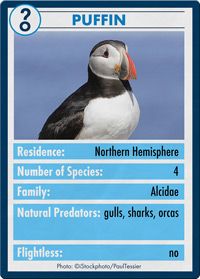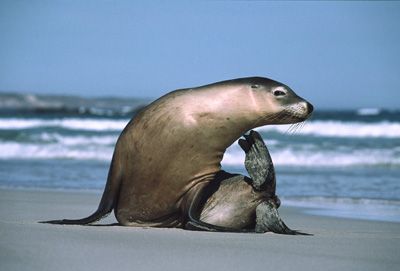Consider the bagel and the doughnut. These breakfast treats are found in the same food group and share the same ringed shape. But the similarities stop there. Touch, smell or taste a doughnut and a bagel, and your senses will tell you that these breads are two totally different culinary creatures. People with savory tastes go for hearty bagels, while deep-fried doughnuts woo us with their siren song of sweet.
In the avian world, puffins and penguins are often lumped together because of their superficial similarities. To begin with, their names mean virtually the same thing. Ornithologists first used "puffin" -- which meant "fatling" at the time -- to describe Manx shearwater chicks, which they mistook for baby puffins [source: Project Puffin]. Once they realized the mix-up, they stuck with the original moniker. In a similar flub, penguins received their name after being confused with a now extinct bird called the great auk. The great auk's scientific name, Pinguinus impennis, comes from the Latin word "pinguis," which means "fat." From that, the chubby penguin received its name [source: Gaskell].
Advertisement

Certain physical characteristics of puffins and penguins make them appear more closely related than they are. Although puffins are shorter than penguins, barely breaking the 1-foot (0.3-meter) mark, they have matching white bellies and black overcoats. Both walk with a teeter-totter motion on orange webbed feet.
Socially, the seabirds have a lot in common, preferring to hang out and nest in large numbers. Although various terms may apply, groups of penguins are called colonies (rookeries refer to nesting penguins), and puffin clans are referred to as circuses and puffinries. Macaroni penguins may band together in breeding groups of up to 2.5 million birds [source: Reynolds]. Because they enjoy being around their own kind so much, puffins will readily approach wooden puffin replicas that ornithologists station at nesting sites in order to lure them in and observe their habits. In addition, both male and female puffins and penguins often mate for life.
But as much as we may adore each bird's awkward gait and smartly tailored feathers, let's get one thing straight: Penguins aren't puffins, nor are puffins penguins.
Advertisement



